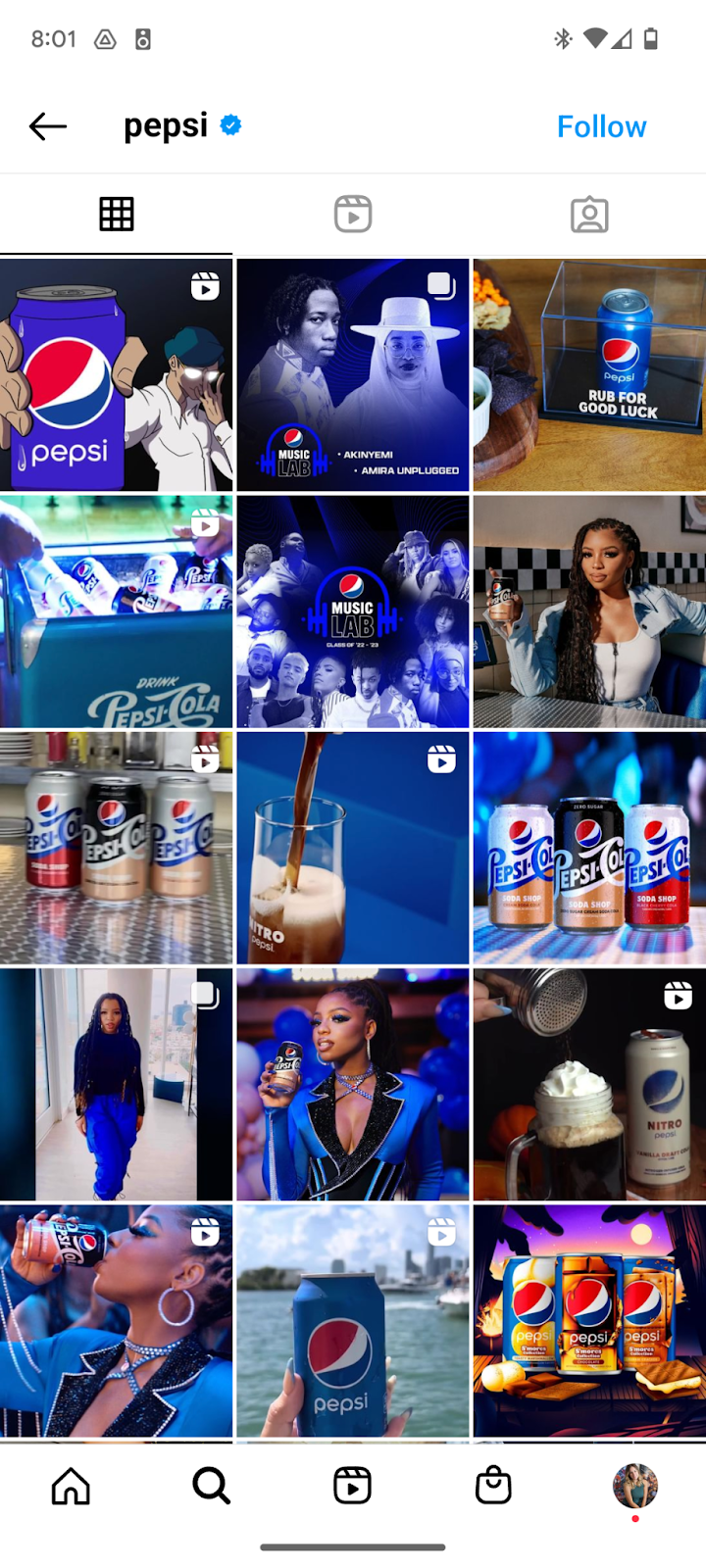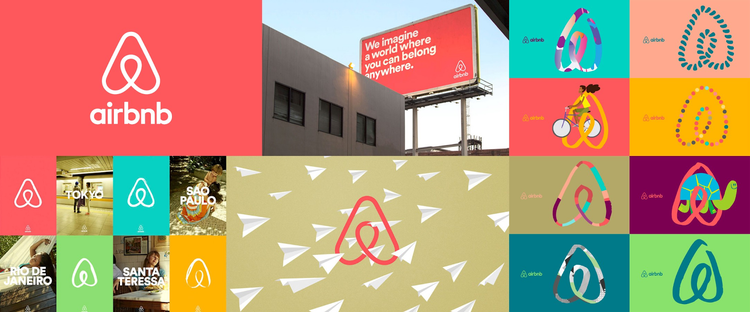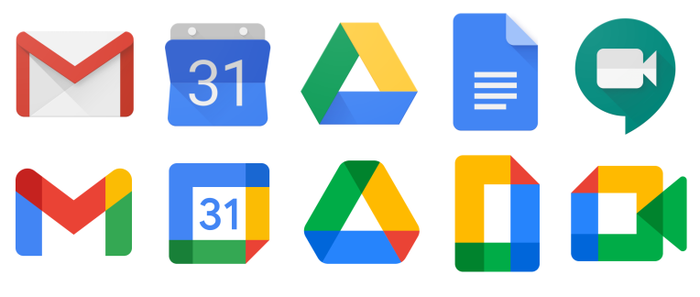The ultimate guide to brand consistency

The average person sees about 10,000 ads per day. Amidst that level of overwhelming information, how can you help your brand stand out and encourage brand recognition in crowded media spaces?
Brand consistency can increase your presence in a saturated market, build long-lasting customer relationships, expand customer loyalty, and drive more sales. In fact, having consistent brand messaging can increase revenue anywhere from 10-20%.
This guide covers everything you need to know about brand consistency — from the benefits of keeping your brand consistent to how to create a unified experience across all channels.
Summary/Overview
What is brand consistency?
Branding consistency is the process of creating and maintaining a unified brand identity and message across all your marketing channels. When companies generate a consistent customer experience, trust and clarity are established with customers, enabling them to recognize a brand quickly (thereby increasing brand awareness) and understand what makes it unique.
Brand consistency is like the glue that holds a company's identity together. It comes down to maintaining a harmonious and unified experience across all touchpoints with your audience, whether it's your website, social media, or even your physical workspace.
When your brand is consistent, it demonstrates a sense of meeting expectations and staying true to established content models, thereby creating a sense of familiarity and trust. Consistency means using the same colors, fonts, and logos across different platforms.
It also means keeping your messaging in line with your values and tone of voice, and having a cohesive look and feel that resonates with your target audience. So, whether you're designing a fancy brochure or posting a witty tweet, maintaining that brand consistency ensures that you're speaking with one clear and recognizable voice.
Why is brand consistency important?
Consistency is an important brand strategy because customers respond to and expect it. Research shows 90% of potential customers expect a similar experience with your brand across all marketing platforms.
Imagine you pop over to the newly built Starbucks by your house, but they have a different brand logo on the sign, a pastel brand color scheme on their packaging, and a different menu than you’re used to. It’s disorienting and confusing, and you’re left wondering if this is even a Starbucks.
Brand consistency ensures customers recognize, connect, and build trust with your brand so you can then establish relationships and drive sales. Consistency with your brand design helps create clarity and trust with customers, allowing them to recognize your company quickly and understand what makes you unique.
Many companies make the mistake of not paying attention to their brand consistency, leading to a fragmented customer experience. For example, one of the greatest marketing disasters was Coca-Cola’s “New Coke” marketing campaign. Changing the formula for the world’s most popular soft drink was an expensive mistake for the company. People need consistency, especially when it comes to their daily soda of choice.
The five elements of brand consistency
You only have 0.05 seconds to make an impression. That’s why every detail matters when it comes to brand consistency.
Every element of a company’s branding should be unified and consistent across all channels — from logos and color schemes to font choice, design elements, messaging, and more. Let’s explore the five main components of brand consistency.
1. Brand messaging
Messaging can help you build an emotional connection with your customers. Who can forget the iconic Sarah McLachlan SPCA commercial? Not only did it pull on our heartstrings, but it was also effective, raising over $30 million for the nonprofit.
Brand messaging is the core of a company’s identity and sets the tone for how your customers perceive you. It involves crafting a message that reflects your brand story — or why you exist — and your brand promise, or what you offer customers.
An example of this would be Amazon’s brand message. Amazon says it’s “guided by four principles: customer obsession rather than competitor focus, passion for invention, commitment to operational excellence, and long-term thinking.” This tells Amazon’s brand story and expresses its commitment to customers — the brand promise.
To implement effective branding messages, start by defining your core values and goals for the business. Once you have your brand values, use them to create brand stories and promises that reflect those values and goals.
2. Visual identity
According to Forbes, consistency in the color palette for your brand’s logo, digital content, and promotional material can improve brand recognition by up to 80%. Take a look at the Pepsi Instagram feed for a solid visual example of this.

It’s giving blue. It’s serving Pepsi. Pepsi’s brand colors are used throughout the account, providing the viewer with a consistent and recognizable appearance. This is an example of a strong, consistent brand image.
Creating a visual identity involves choosing your logo, typography, color palette, imagery, and other design elements used in your marketing materials. Your brand assets should be consistent to create a cohesive, recognizable look for your company.
Once you have your messaging, tone, and visual identity, compile this information to make your brand guidelines. These guidelines are a set of rules that you should follow when creating any type of content to ensure brand consistency. You can also make templates and style guides to help manage different types of content, campaigns, or brands.
3. Tone of voice
You’ve got your core values and visual branding nailed down, and you’re compiling the elements of your brand into your brand guidelines. Now it’s time to determine your tone of voice.
Your tone of voice is the brand personality behind your company and how you communicate with customers. It should always be consistent across all platforms, materials, and campaigns.
A great example of this is Apple’s focus on simplicity. The language it uses in its marketing materials is straightforward — no frills or jargon. Apple’s marketing content has a clear message and is designed to be understood by its target audience.
Consider your brand values and target audience when creating your tone of voice. What tone resonates with your potential customers?
Think about how you want to come across: are you friendly and approachable? Fun? These characteristics should be reflected in how you communicate with your audience.
4. Website design and layout
Every strong brand needs a website. In fact, 76% of consumers look at a company’s online presence before visiting a physical location. Your branding efforts can go to waste if your website doesn’t reflect the same messaging, quality, and visuals as your other channels.
A website should be easy to navigate, feature high quality visuals, and reflect the same messaging as your other marketing materials. Remember that more than half of all website traffic comes from mobile devices, so ensure your website is optimized for mobile use.
5. Social media presence
Social media presence is an integral part of your brand’s marketing strategy. It involves creating and curating content on social media platforms like Facebook, Instagram, X (Twitter), and LinkedIn to promote your brand and engage with customers. This includes using visual elements like photos, videos, infographics, and animations to create a strong brand identity across all channels.
Around 75% of internet users use social media to research and learn about brands. Stay true to your brand voice on social media, but customize your content to suit each social media platform. For example, Instagram and TikTok are more visual platforms and therefore require more effort towards creative visuals, while Twitter focuses more on short, text-centric messaging.
Examples of brand consistency
Looking at successful examples is the best way to understand what it takes to create a consistent brand. Here are three brands that have successfully maintained brand consistency:
Airbnb

Airbnb is a great example of establishing consistent branding across all platforms. Check how the brand uses its logo shape in various ways to create a cohesive and recognizable brand identity.


Coca-Cola

Every piece of content Coca-Cola creates ties back to these core visuals and messaging, crafting a consistent brand experience for customers around the world.
How to maintain a consistent brand
We’ve explored the benefits of brand consistency and creating a consistent brand. Now, let’s look at some strategies you can use to maintain brand consistency.
1. Create brand guidelines
Creating brand guidelines is like crafting a user manual for your brand. It's your chance to lay down the ground rules, ensuring that everyone in your business is on the same page when it comes to representing your brand consistently. Here are a few steps to get you started on this exciting journey:
- Define your brand's personality. Think of your brand as a person. Is it friendly and approachable or more professional and formal? Define the traits that make up your brand's personality, as this will guide the tone of voice and overall communication style.
- Visualize your brand's identity. Establish a visual identity that reflects your brand's essence. Choose a color palette that resonates with your values and consider which fonts, logos, and imagery best represent your brand. These visual elements will become the building blocks of your brand's consistency.
- Craft your messaging guidelines. Determine the key messages that align with your brand's values and positioning. Outline guidelines for writing style, preferred language, and tone of voice. This will help your team members, whether they are creating social media posts or drafting customer emails, maintain a consistent voice and messaging across all channels.
We discussed how brand guidelines are key to creating a consistent brand experience. Your brand guidelines should cover everything from your brand name and logo to more detailed instructions on how to use visuals, fonts, colors, and language.
But what good are brand guidelines if your employees don’t know them? It’s essential to have a process to train your team on your brand guidelines. This could include one-on-one sessions, group training, and even regular check-ins to ensure everyone is up to date.
Style guides and brand guidelines aren’t just for the marketing and design team. Your messaging needs to be consistent across all marketing channels and touch points for effective brand management. Everyone in your organization should know the guidelines and understand how they contribute to building a successful brand.
2. Consistent use of brand elements across all marketing channels
When customers see the same color palette, logo, and tone of voice used throughout your marketing materials, they learn to associate those elements with your brand.
Your style guide is the holy grail for making sure this happens. It should provide guidance on using brand elements across all marketing channels — from social media posts and website design to content creation and advertising campaigns.
Here are some tips to keep in mind when using brand elements across multiple channels:
- Keep fonts, colors, and logos consistent.
- Make visuals that are visually appealing and on-brand.
- Use language that reflects your brand’s voice and values.
- Use your logo on all marketing materials to encourage brand recognition.
3. Regular review and updates to brand guidelines
Brand guidelines aren’t just a one-time thing. You should review them regularly to keep them relevant and updated with your brand goals and strategy.
Consumer tastes, preferences, and behaviors change over time, and industry trends come and go. If you want to build a successful brand, be open to evolving.
Embracing new trends can keep your brand feeling fresh and modern while still staying true to who you are. Regular reviews of your brand guidelines and updates, when necessary, can help your brand remain relevant, recognizable, and consistent across all channels.
Common challenges to maintaining brand consistency
Challenge #1: Maintaining consistent branding
Maintaining consistent branding across all marketing channels can be challenging, especially when multiple people work on different materials.
To combat this, ensure everyone is aware of the brand guidelines and has access to the same assets. Regularly review the guidelines to ensure they’re up to date, and discuss any questions or changes with the team.
Challenge #2: Working with third-party vendors or partners
Working with third-party vendors or partners can create potential inconsistencies in your branding.
Make sure there’s clear communication between everyone involved in the project. Ask for samples of their work beforehand, so you can check it against your branding standards before approving it.
Quality assurance can help you identify potential issues before they become bigger problems.
Challenge #3: Rebranding
Rebranding can be exciting but presents its own set of challenges.
Start by creating a comprehensive style guide that reflects your new brand identity, and ensure everyone on the team has access.
Be clear on what past assets need to be replaced with updated versions, and set up an approval process to update everything correctly before it goes out.
Keep all your branding elements in one place
Whether you're starting from scratch or looking to enhance an existing brand, Adobe Express can help you create consistent, high-quality content across all your channels. With our free plan, you can access thousands of images and fonts to get started.
And if you want to take things up a notch, our premium plan offers premium templates, over 160 million Adobe stock images, 20,000 licensed Adobe fonts, and a Brand Feature that allows you to add your logo and branding in one click.
With Adobe Express, you can create branded content that looks and feels professional, even if you're not a designer. With our easy-to-use tools, you can create content quickly and easily, so you can focus on what you do best: growing your business.
Try Adobe Express today and see how easy it is to create branded content that will help you stand out from the crowd.